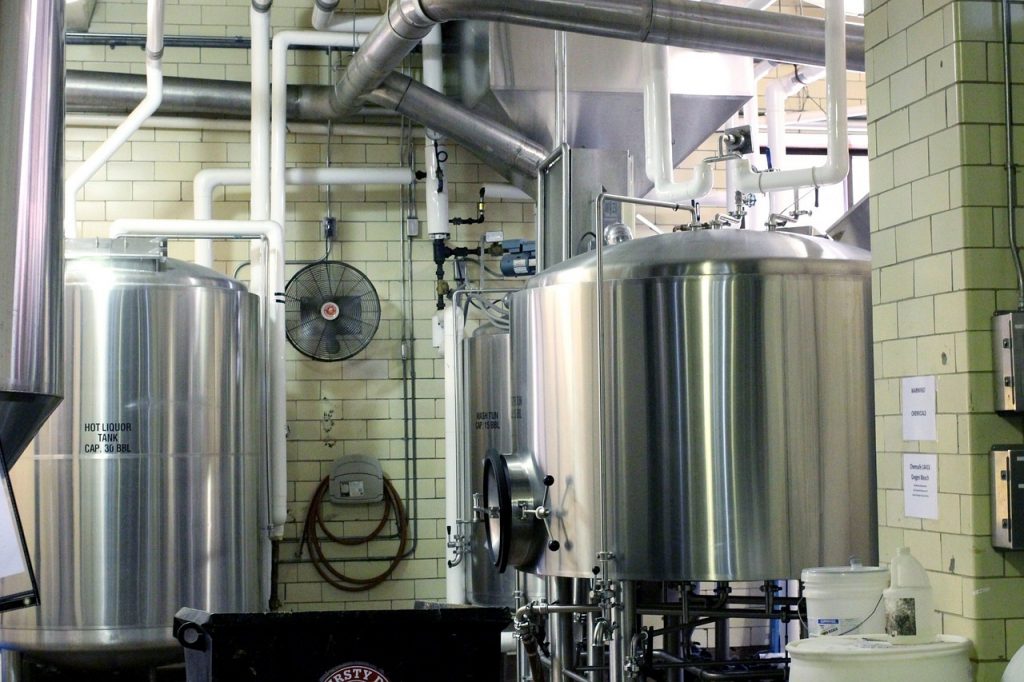Industrial steam disinfection of food production equipment
Steam disinfecting production equipment safely and effectively is important for companies in the food industry. It allows them to manufacture under optimal conditions and ensure that there are no contaminations and avoid possible liabilities.
In recent years advances in steaming technology have led more and more processing facilities to adopt dry steam steaming as a sanitary technique in place of traditional methods using chemicals or hot water.
The use of dry steam to disinfect conveyor belts and other machinery offers a number of advantages. This process is safer, more cost-effective and environmentally friendly than other cleaning methods.
Steam is the key to cleaning and disinfection
Chemical-free cleaning
Traditionally, food and beverage processing plants relied on powerful chemical agents to clean and sanitize equipment. These chemical cleaners often contain toxic substances that can injure workers and cause harm and illness to customers.
Many quality managers who oversee food safety programs recognize that it is important to minimize chemical risks to their employees and the environment and therefore leave potentially harmful chemical cleaners out of the equation.
In contrast, dry steam cleaning methods are very effective in removing animal fat, protein and oil, vegetable matter, all types of residual dirt from production and other similar substances from surfaces.
They also prevent cross-contamination between equipment. Best of all, they achieve this without the risks associated with the use of industrial chemicals.
Drastic reduction in water consumption for cleaning operations
According to the United Nations, industrial water use accounts for 22% of global consumption. There are industrial water hoses of up to 40 – 45 liters of water per minute used during sanitation processes, which means that operating eight hours a day can consume more than 640,000 liters of water per month.
Dry steam cleaning, on the other hand, uses very small amounts of water that can be measured in a few liters per hour. Giconmes estimates that steam cleaning reduces water consumption by up to 90% compared to traditional practices.
Higher levels of sanitation
Cross-contamination of food substances is a major health risk worldwide. It also poses a risk to food industries.
For example, the recent listeriosis intoxications in batches of larded meat or the contamination of potato tortillas are due to the lack of sanitation and control in the manufacturing processes.

According to the Euopean Cleaning Journal, steam sanitation systems greatly reduce the risk of cross-contamination.
Dry steam cleaning systems effectively eliminate bacterial pathogens by breaking the cellular cohesion between the microorganisms and the surface structure through intense heat. These steam systems use temperatures between 100 and 180°C (212F – 340F) to boil and remove the biofilms that protect microorganisms.
Afterwards, healthcare personnel can vacuum the bacterial debris with vacuums incorporated in the steam generators or remove them manually with microfiber cloths. Independent studies have shown time and again that dry steam cleaning systems remove at least as many pathogens as other techniques.
Increased efficiency in the cleaning process
Steam vapor cleaning solutions are more effective than other cleaning techniques. This process requires less downtime, and automation can be implemented to reduce the need for personnel.
Steam works quickly to loosen dirt, reducing the need for scrubbing or scraping during the cleaning process and is also able to penetrate into small crevices and pores dissolving dirt, grease and stains that are difficult to reach with traditional cleaning methods.
Reduced labor requirements and shorter production stoppages
traditional industrial sanitation methods are time-consuming and labor-intensive. Generally, employees have to cover all electrical components with plastic to prevent water damage. Only after covering all exposed electrical components can employees start using the hoses.
In contrast, this whole process is not necessary with steam. In addition to the sanitizing capacity, the available automatisms shorten the cleaning stops, thus obtaining a double benefit: better cleaning and more time for production.
If you manage a food industry, be aware that steam offers significant advantages in the cleaning and disinfection of production lines.
Jesus Longas